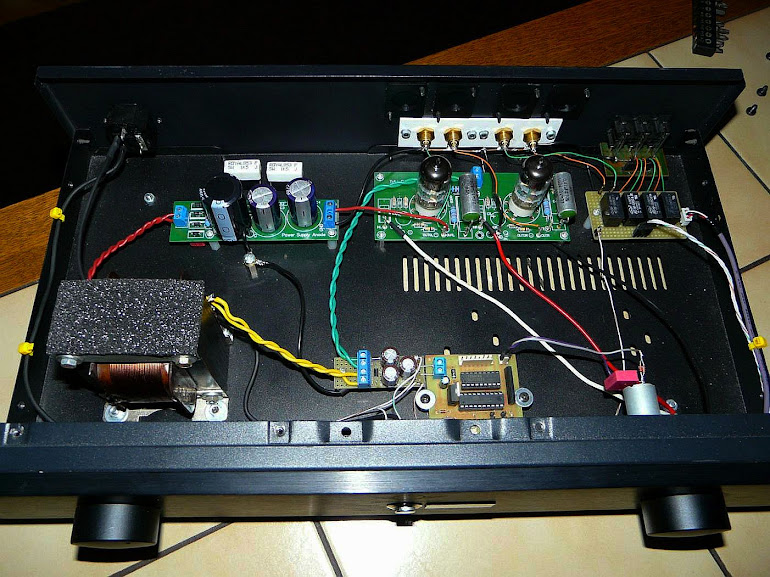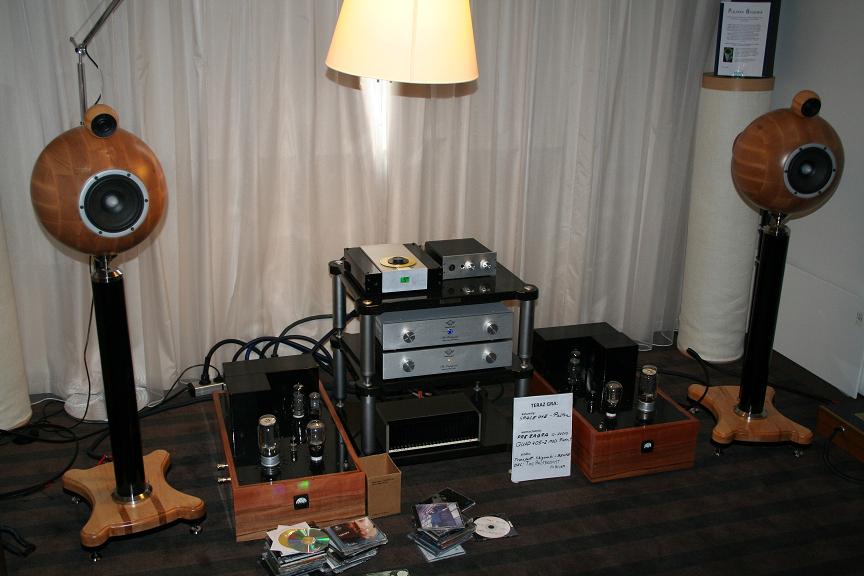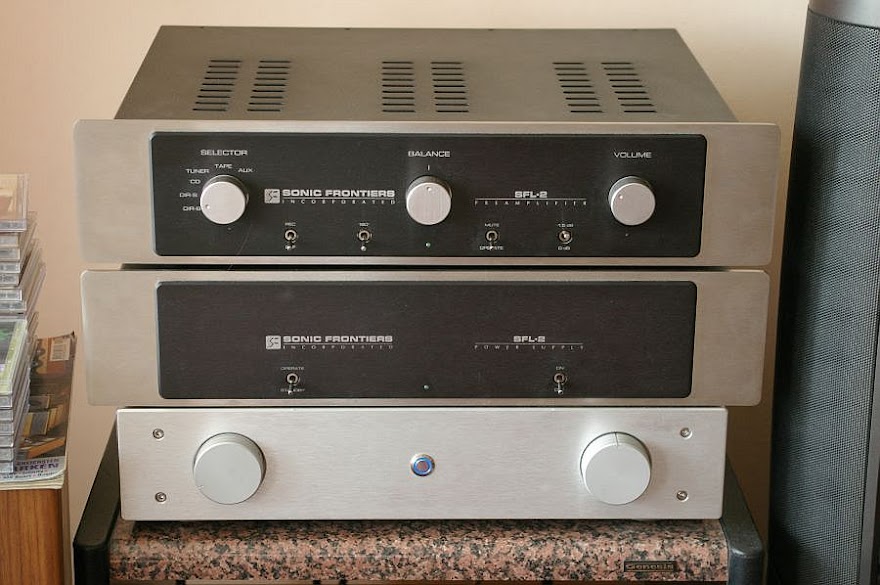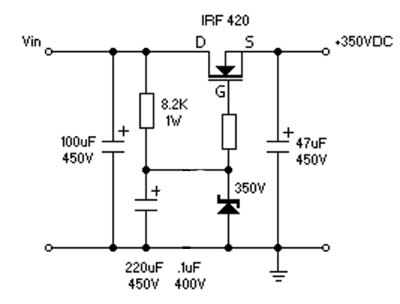Dear all,
I'm so confused !
Which one is the most update schemtic for M7/M77 ?
What is the "Tube" using now ?
What is the year of the attached one ?
Many Thanks !
I hope this will ease your pain look here Kondo - Audio Note M7 Tube Pre-amp Clone | D.M.S
I hope this will ease your pain look here Kondo - Audio Note M7 Tube Pre-amp Clone | D.M.S
Thank You For Your Information !
Do you have a good single star ground?
Thanks for the hint. On further investigation, I seem to have some ground loop issues involving some of the other gear connected to it. I will complete the investigations and report.
Many thanks again.
It's interesting how many variations there are on this design. The original (I think!) used a choke input, tube rectified PS. The one linked above is a SS voltage doubler - couldn't get much different.
yes, as mentioned on the site, the power supply comes from another 12B4 tube project. But the question was regarding the amplifier itself and the correct values. That is a working and tested design and the author is very happy with the results. if you want a paint by numbers approach (monkey see monkey do) ignore the link I posted.
I built line preamp after inspiration of Kondo KSL-M7 (remote volume control added as i am slightly lazy  ). Been confused about so many versions, and original 6072 tubes was unavailable at the time, so I go for E88CC tubes wchich I had plenty in my drawer. I used regulated power supply very similar to that used in Klimo Merlin pre. It sounds fantastic even using standard metallized resistors and fairly unexceptional components. Only the output capacitors must be highest possible quality because it has huge impact on sound. Tried many of them.
). Been confused about so many versions, and original 6072 tubes was unavailable at the time, so I go for E88CC tubes wchich I had plenty in my drawer. I used regulated power supply very similar to that used in Klimo Merlin pre. It sounds fantastic even using standard metallized resistors and fairly unexceptional components. Only the output capacitors must be highest possible quality because it has huge impact on sound. Tried many of them.
- vintage Sprague metal can oil caps sounded quite well, warm and saturated, but slightly lacking fine details and dynamic.
- SCR FEP teflon/tinfoil great disappointment. Synthetic, artificial sound, like instant coffee vs italian aromatic espresso. Lack of accoustic, lack of finest details, lack of emotion. The sound was not dry, but clinical sterile, deprived of liveness
- obbligato gold premium sounded fair, but lacking in bass depth and volume
- Audio Note Copper foil mylar in oil rich, full sound with lot of space. Very pleasant to listen, but slightly lacking in top end and overall dynamic
- Mundorf Supreme Silver Oil is a great capacitor, very precise, spatial and silk at the same time. It's little on the bright side, but without any harshness. In my system it overperforms Audio Note.
- Audyn Cap True Copper - this capacitor outperformed anything I tried so far. It is as full, reach sounding as Audio Note, but without lacking in top and dynamics. It's as spatial and precise as Mundorf, but with better tonal balance. I'm nicely surprised. Very recommended. My personal favourite.
The tubes have also big impact on sound. I'm only using NOS and I prefer Telefunken and Amperex Bugle Boy.
There are some pictures, regulated power supply not implemented yet:



It easily outperformed Sonic Frontiers SFL2, Audio Innovations L-2 and Tube Technology Prophet. Audio Research L-1 was literally mopped the floor. I'm very satisfied with this design. Rest of my system is here: Mój system
- vintage Sprague metal can oil caps sounded quite well, warm and saturated, but slightly lacking fine details and dynamic.
- SCR FEP teflon/tinfoil great disappointment. Synthetic, artificial sound, like instant coffee vs italian aromatic espresso. Lack of accoustic, lack of finest details, lack of emotion. The sound was not dry, but clinical sterile, deprived of liveness
- obbligato gold premium sounded fair, but lacking in bass depth and volume
- Audio Note Copper foil mylar in oil rich, full sound with lot of space. Very pleasant to listen, but slightly lacking in top end and overall dynamic
- Mundorf Supreme Silver Oil is a great capacitor, very precise, spatial and silk at the same time. It's little on the bright side, but without any harshness. In my system it overperforms Audio Note.
- Audyn Cap True Copper - this capacitor outperformed anything I tried so far. It is as full, reach sounding as Audio Note, but without lacking in top and dynamics. It's as spatial and precise as Mundorf, but with better tonal balance. I'm nicely surprised. Very recommended. My personal favourite.
The tubes have also big impact on sound. I'm only using NOS and I prefer Telefunken and Amperex Bugle Boy.
There are some pictures, regulated power supply not implemented yet:


It easily outperformed Sonic Frontiers SFL2, Audio Innovations L-2 and Tube Technology Prophet. Audio Research L-1 was literally mopped the floor. I'm very satisfied with this design. Rest of my system is here: Mój system
@McGyver....what circuit did you use, mind posting the complete circuit with power supply?
I'm always interested to hear reviews on caps in certain projects / designs. Where can I buy the Audyn caps, I would like to try them? (BTW the caps in your picture do not look like the Audyn true coppers)
Thanks
I'm always interested to hear reviews on caps in certain projects / designs. Where can I buy the Audyn caps, I would like to try them? (BTW the caps in your picture do not look like the Audyn true coppers)
Thanks
Last edited:
Yes, I'll post the schematics, only must find the drawing. Or draw it again 
You can buy Audyn True Copper caps at Inter Technik Germany.
The caps on my picture are made in Poland vintage military MBM type paper capacitors, that picture was taken when I tested them. They're quite good capacitors, far better than almost every metallized polypropylene and costs about nothing.
You can buy Audyn True Copper caps at Inter Technik Germany.
The caps on my picture are made in Poland vintage military MBM type paper capacitors, that picture was taken when I tested them. They're quite good capacitors, far better than almost every metallized polypropylene and costs about nothing.
Schematics here:

P-100k black Alps
R1 - 820k
R2 - 1k
R3 - 8k2/2W
R4 - 150R
R5 - 15k/2W
R6 - 220k
C2 - 0,47uF Audyn True Copper
C5 - 47uF/250V
The diode function requires a commentary. This circuit suffers from the problem that on start up, the grid of second halve will immediately rise to HT potential while the cathode is still cold and tubes conducts no any current. It causes arcing between the electrodes, and rapid destruction of the valve. This problem can be easily resolved by connecting an ordinary rectifier diode (such as a 1N4007) between grid and cathode. At start up, this will keep the cathode within a few tens of volts of the grid. Once hot, the valve will bias with the cathode at a higher potential than the grid and the diode will be reverse biased, off. It will be present only as junction capacitance (few PF) between cathode and grid, wchich is negligible.
Simple mosfet regulated anode power supply:

(in my preamp zener diode is 180V, not 350V)

P-100k black Alps
R1 - 820k
R2 - 1k
R3 - 8k2/2W
R4 - 150R
R5 - 15k/2W
R6 - 220k
C2 - 0,47uF Audyn True Copper
C5 - 47uF/250V
The diode function requires a commentary. This circuit suffers from the problem that on start up, the grid of second halve will immediately rise to HT potential while the cathode is still cold and tubes conducts no any current. It causes arcing between the electrodes, and rapid destruction of the valve. This problem can be easily resolved by connecting an ordinary rectifier diode (such as a 1N4007) between grid and cathode. At start up, this will keep the cathode within a few tens of volts of the grid. Once hot, the valve will bias with the cathode at a higher potential than the grid and the diode will be reverse biased, off. It will be present only as junction capacitance (few PF) between cathode and grid, wchich is negligible.
Simple mosfet regulated anode power supply:

(in my preamp zener diode is 180V, not 350V)
McGyver, I ran a quick SIM on your circuit vs the "original". Both circuits were normalized to measure THD with the same output voltage. The SIM shows that the distortion figures are much lower with the "original" higher resistor values than with the values you used R4=2.7k, R3=120k, R5=120k) this is just a comment. Maybe you could try changing them at some point and report on listening test?
Cheers!
Cheers!
A signal diode (e.g. 1N4148) will have much smaller capacitance than a power rectifier. People have used power rectifiers as cheap varicap diodes.McGyver said:This problem can be easily resolved by connecting an ordinary rectifier diode (such as a 1N4007) between grid and cathode.
McGyver, I ran a quick SIM on your circuit vs the "original". Both circuits were normalized to measure THD with the same output voltage. The SIM shows that the distortion figures are much lower with the "original" higher resistor values than with the values you used R4=2.7k, R3=120k, R5=120k) this is just a comment. Maybe you could try changing them at some point and report on listening test?
Cheers!
On such resistors values as in "orginal" schematics the tube runs at about 0,8 mA wchich is suitable maybe for 12AX7, but not to ECC88. ECC88 at such low current tends to sound weak, slow, unprecise and undynamic. Decreasing measurable THD in expense of overall sound quality is not any good approach for me.
Yes indeed, but 1N4148 is rated at 100V only. One could use two diodes in series of course. But this is marginal and I can't find any impact on sound at all.A signal diode (e.g. 1N4148) will have much smaller capacitance than a power rectifier. People have used power rectifiers as cheap varicap diodes.
The trafo is polish made toroid with two secondaries, 168V at 0,1A and 6,5V at 1,5A.(...)
What is your transformer voltage before the regulated PS?
Please let me know.
Thank you
Greetings
168V allows to use 250V rated electrolytics.
I'm planning to rebuild this circuit with maybe tantalum Shinkoh resistors.
This circuit works great also as an gainstage for WM8805/SM5842/AD1865 DAC with passive I/V conversion. I'll post pictures when I'll finish this project in "photo gallery" thread.
The diode is only going to see a few volts so 1N4148 (or similar) is fine. A small neon bulb is an alternative.Yes indeed, but 1N4148 is rated at 100V only. One could use two diodes in series of course. But this is marginal and I can't find any impact on sound at all.
Fortunately the diode capacitance is bootstrapped by the cathode follower but I would not want a largish non-linear capacitance in my audio circuit when I could have a smallish one instead. It could easily swamp any differences between resistor brands.
The diode is only going to see a few volts (...)
Yes indeed, but on startup the diode can see full supply voltage.
- Home
- Amplifiers
- Tubes / Valves
- Audio Note M7 Line Preamp??